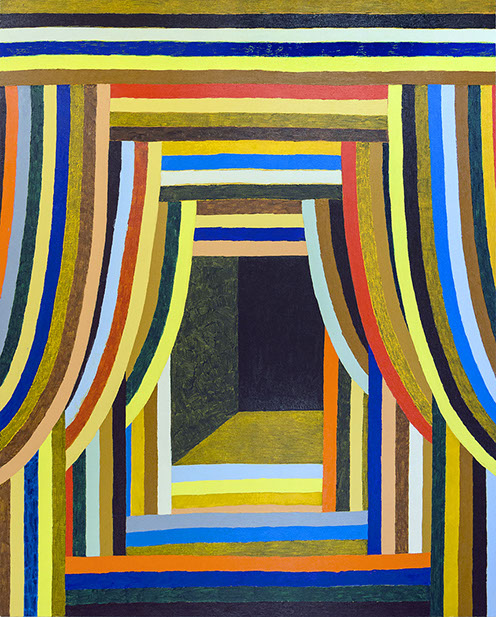Hankerings
@ Morgan Lehman and Mulherin
Philip Guston: This enigma is what you want, this mystery. Right?
Clark Coolidge: By any means.
Philip Guston: By any means. So that the ones that worked and that I kept, and by worked I mean kept on exciting me, kept on vibrating, kept on moving, were the ones where it is not just line. When it becomes a double activity. That is, when the line defines a space and the space defines the line, then you’re somewhere.
-from Philip Guston: Collected Writings, Lectures, and Conversations
A vast swath of visual ground was broken a century ago, leading to an explosive growth of new forms in art. Many young artists are looking back to Cubism, Fauvism, German Expressionism, and various related movements. They're building on these pioneering visual achievements and creating a fresh diversity of expression. More often than not, they embrace the kinds of complexity, ambiguity and paradox articulated in Angela DuFresne's summer 2015 article, Irony, Sincerity… Is There a Third Pill? Artists come to mind whose work is rich in historical associations, such as Clare Grill, Michael Berryhill, and Shara Hughes. Another is Matt Kleberg, whose two part solo exhibition Hankerings was concurrently shown at Mulherin and Morgan Lehman Gallery.
Matt Kleberg conjures Fernand Leger, Marsden Hartley, and Max Beckmann among others. The paintings in Hankerings consist of colorful stripes and blocks of color. Kleberg builds rhythms, balances directional forces, and creates illusionary space. They read as stages with curtains, altar-piece polyptychs, or niches. His use of the void reminds me of John Cage’s 4’33”, Alberto Giacometti’s The Invisible Object and James Turrell installations. Likewise, the power of Kleberg’s work is in how he charges empty space.
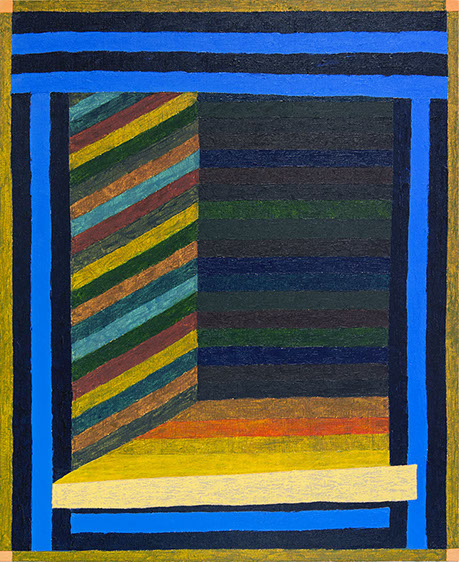
Midnight and I'm Not Famous Yet, 2015
oil stick on canvas, 36" x 44"
photography by Tal Barel
The first piece one encounters entering Morgan Lehman Gallery exemplifies the artist’s treatment of depth. Midnight and I’m Not Famous Yet has a distinct fore, middle, and background. It could be a niche or entry to a hallway that turns to the right. In the foreground, stripes with the kinds of edges you might find on a Stonehenge boulder describe post and lintel construction. The middle ground includes diagonal stripes in colors of low light value–the uppermost of which are overlapped by the lintel. They create one dimensional perspective. The background is a wall of horizontal stripes in shadow. Space is established. Color and texture modulations fill the void. He plays piano on the walls. Dissonance comes in the form of a chromatic orange stripe on the floor and an errant naples yellow stripe that slightly overlaps an electric blue on the right post.
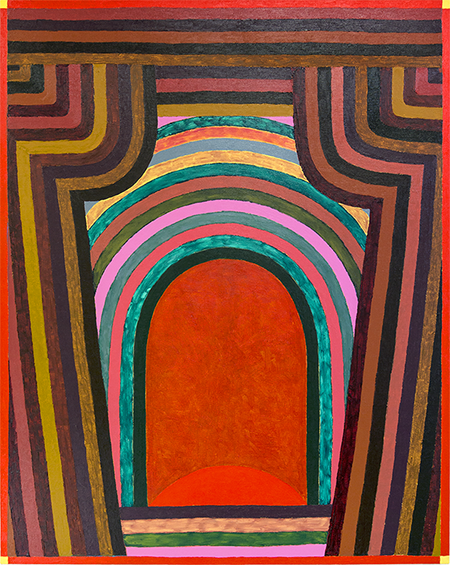
Franny, 2016
oil stick on canvas, 48" x 60"
photography by Tal Barel
Kleberg finds freedom in a limiting motif. There is surprising diversity on display thanks to wide ranging, yet delicately restrained variations. Spend time with these painting and they open up. They’re each like characters from a book, but Franny, at Mulherin, is named after one. It features earthy red and yellow art deco curtains and a Turrell-esque red stage that looks like a glowing portal. Middle ground stripes shimmer with translucent paint and alternate with glowing stripes of complimentary hue. It’s named after the protagonist in Salinger’s novel Franny and Zoey–which is also the source of the show’s title Hankerings. This painting, like others, has a spiritual quality grounded in physical mass. It’s not disembodied like a Rothko or weightless like a Kandinsky. It’s solid and it shares space with our own.
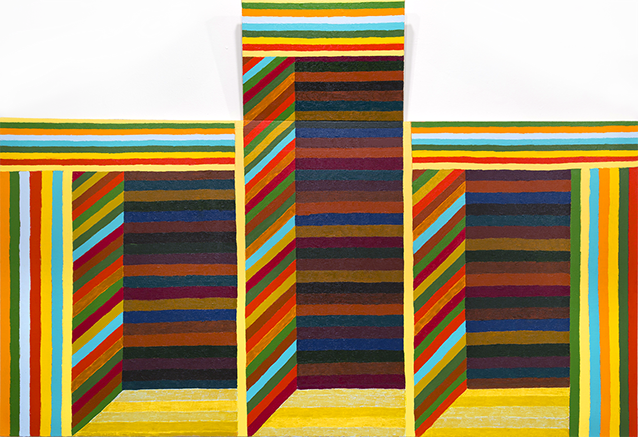
Bob Thompson and the J-Town Takedown, 2015
oil stick on canvas, 96" x 66"
photography by Tal Barel
Kleberg uses several devices to make the space between the viewer and painting ambiguous. One is the previously mentioned depth. Another appears in Franny, Midnight and I’m Not Famous Yet, The Turkey, and Sinkhole (Uncle High Lonesome). There are small squares painted in the corners where framing stripes meet. As I’m standing in front of the canvas, they disrupt its shape just slightly. This minimal pixilated camouflage in my periphery gives a vignetting effect. It’s just enough to hitch at the transition from imaginary space to real space. Some canvases are shaped to resemble polyptychs that open at an altar. In Bob Thompson and the J-Town Takedown, the upper panel literally leans off the wall towards the viewer.
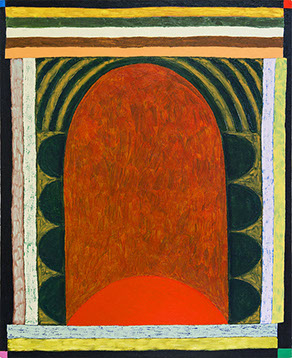

The Turkey, 2016
oil stick on canvas, 36" x 44"
photography by Tal Barel
Untitled (Yellow), 2015
oil stick on canvas, 24" x 30"
photography by Tal Barel
The impression of our space grabbing at painted form is heightened by rhythm, color and texture in each painting. The edges of Kleberg’s stripes work like the texture of a late Giacometti sculpture, where distance and object seem to have physical effects on one another. Many of Kleberg’s edges are broken or warped–marks reminiscent of Beckmann– as in Untitled (Yellow). Some stripes bend like distant forms behind rising heat. Some surfaces appear dense, opaque and compact. Others recede and appear hollow with translucent paint. Some almost merge with their neighbors of a similar color. Stripes advance and recede with syncopated rhythmic complexity or ripple across the surface–especially pronounced in Idle Warship. Everywhere, you’ll find relatively straight lines and lines that buzz against one another. They go from limp to load bearing. In LLBean Boudoir, they billow and pinch. In Two Gone Over, they stream taught like gift ribbons. The grand effect is the uncanny feeling that the void is a presence crossing from illusionary space into real space. Imagine watching Dorthy pull back the curtain at the Wizard of Oz to find a vacant booth.
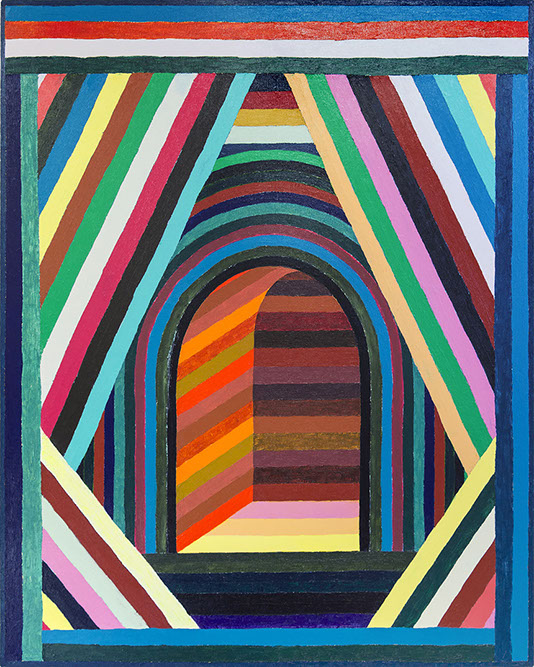
Two Gone Over, 2016
oil stick on canvas, 48" x 60"
photography by Tal Barel
There’s a strange pink symbol in the top left corner of Sinkhole (Uncle High Lonesome) that looks like a letter or a logo. This is certainly the only place at either gallery we see the artist flirt with social emblems or text. It equally resembles the symbol for male or female. One could make any number of associations and the desire for ambiguity is clear. This kind of intention has precedence although it’s a more jarring foil than the occasional palimpsest, dissonant color, or stripe that doesn’t behave. It could signal a pivot point for future work, but it’s also an exclamation mark for the artist’s struggle echoing in both exhibitions. These paintings have been lived with and fought for. Hankerings showcases impressive paintings that pack an immediate punch and reward prolonged attention. I’m eager to see what comes next from Matt Kleberg and I expect that he’ll continue to produce such engaging work.
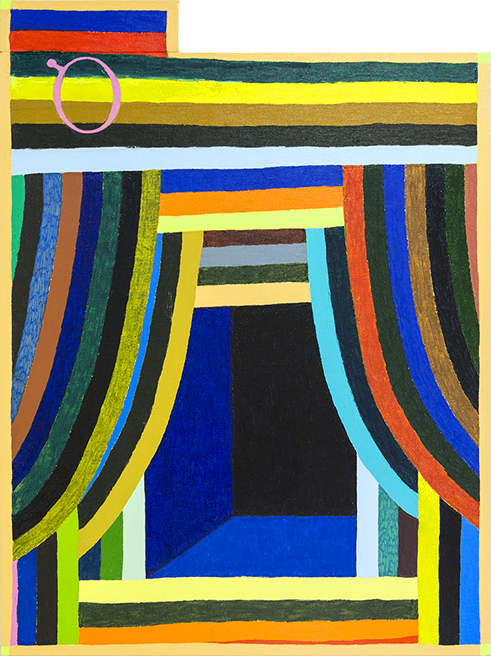
Sinkhole (Uncle High Lonesome), 2016
oil stick on canvas, 36" x 48"
photography by Tal Barel
Scott Robinson is an artist in Brooklyn, NY and the founder of Painting Is Dead
Hankerings
March 31st - May 7th at Morgan Lehman
April 1st - May 8th, 2016 at Mulherin
Morgan Lehman
535 W 22nd St
New York, NY 10011
Hours
Tuesday - Saturday, 10:00am - 6:00pm
Mulherin
124 Forsyth St,
New York, NY 10002
Hours
Wednesday - Sunday 12:00pm - 6:00pm
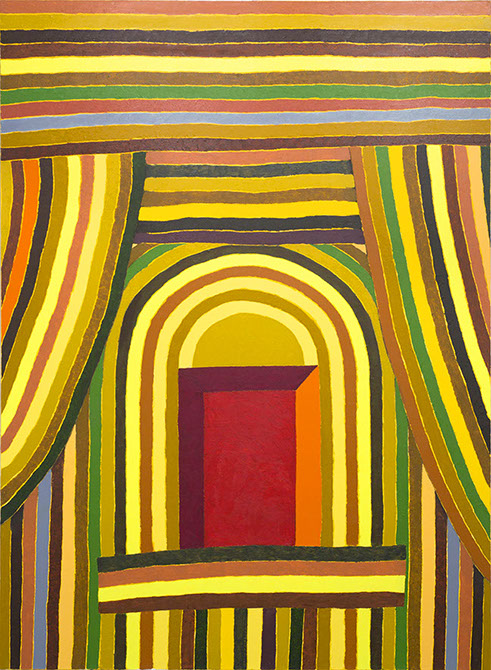
Idle Warship, 2014
oil on canvas, 70" x 96"
photography by Tal Barel
Disclaimer: All views and opinions expressed are those of the authors and do not necessarily reflect the views of the editors, owner, advertisers, other writers or anyone else associated with PAINTING IS DEAD.

